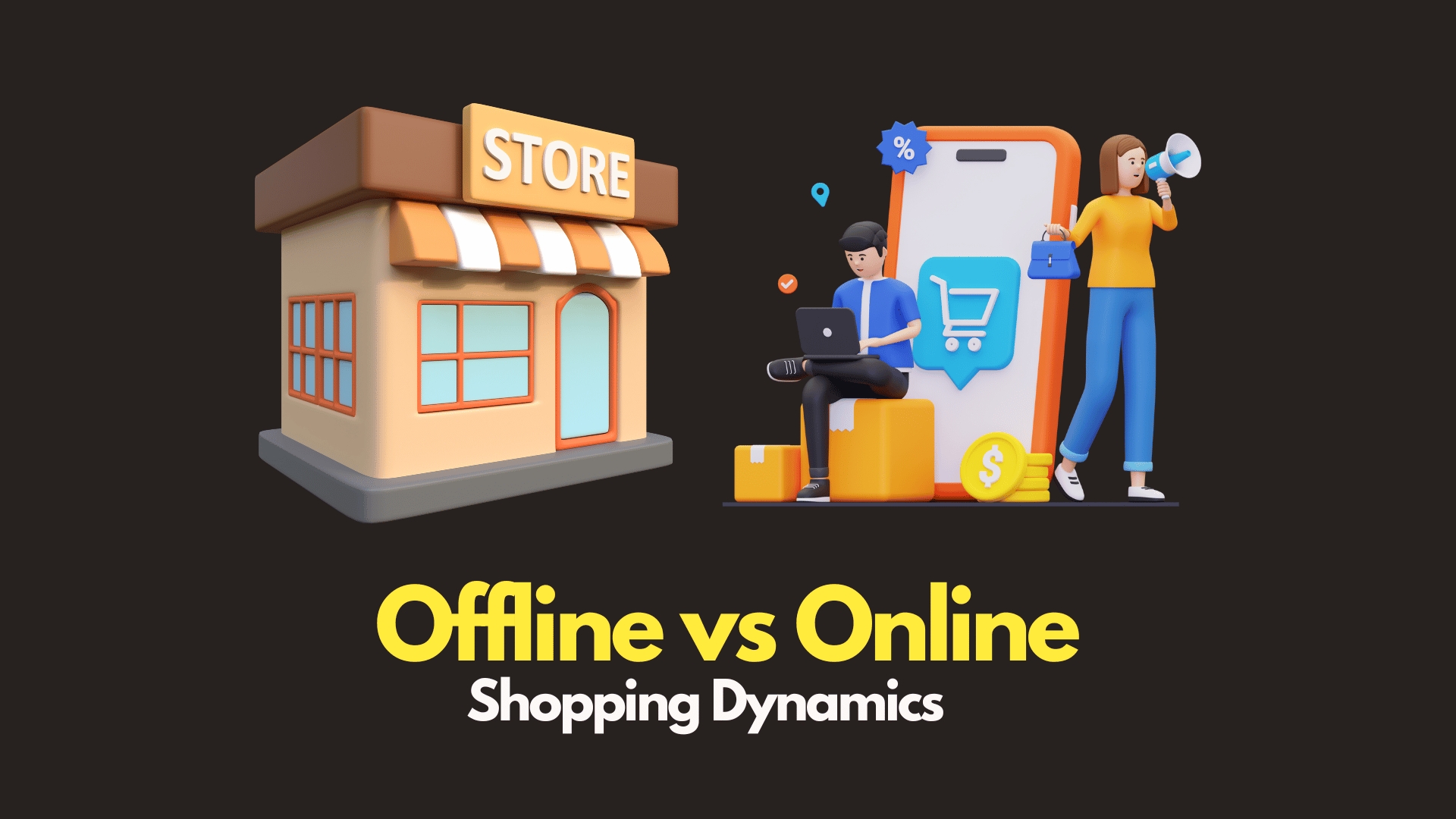Published
- 4 min read
Exploring Consumer Behavior: Online vs. Offline Shopping Dynamics

Introduction
Table of Key Takeaways:
| Aspect | Online Shopping | Offline Shopping |
|---|---|---|
| Convenience | High, with 24/7 accessibility | Limited to store hours |
| Sensory Experience | Limited tactile interaction | Direct product engagement |
| Decision-Making | Influenced by reviews, easy price comparisons | Impacted by in-store ambiance, immediate availability |
| Personalization | Tailored recommendations based on browsing history | Personal interactions and service |
| Return/Exchange Policies | Often straightforward, but requires shipping | Immediate, with direct customer service interaction |
The retail landscape has undergone a seismic shift with the advent of online shopping. This article compares consumer behavior in online and offline shopping environments, offering a comprehensive look at how these two modes influence purchasing decisions.
Convenience: The Online Edge
Online shopping offers unparalleled convenience. Consumers can browse and purchase products anytime, anywhere, without the constraints of store hours or geographical limitations. This 24/7 availability aligns well with today’s fast-paced lifestyle, making it a preferred choice for many. For insights into how technology enhances convenience in various sectors, see Learn 6 Thriving & Stumbling Business Sectors In Last 5 Years.
Sensory Experience in Offline Shopping
Offline shopping, on the other hand, provides a sensory experience that online platforms cannot replicate. The ability to touch, feel, and try products before purchase is a significant factor for many consumers, especially in categories like apparel, fragrance, and fresh produce. The physical store ambiance, from layout to music, also plays a crucial role in influencing consumer choices.
Decision-Making Influences
In online shopping, decision-making is heavily influenced by customer reviews, detailed product information, and the ease of price comparison. Offline shopping decisions are more likely to be impacted by in-store factors such as sales personnel, in-store promotions, and the immediate availability of products. For a deeper understanding of these dynamics, explore Unraveling the Secrets of Consumer Behavior Analysis.
Stay tuned for the next section, where we will delve deeper into the personalization aspects and the return/exchange policies of online and offline shopping.
Personalization and Customer Service: Online vs Offline Shopping
Personalization in Online Shopping
Online shopping platforms excel in personalization. Leveraging data analytics, they provide tailored product recommendations based on a customer’s browsing history, previous purchases, and search preferences. This data-driven approach often leads to a more targeted and efficient shopping experience. For more on how data analytics shapes consumer behavior, check out Harness Alpha Waves for Enhanced Study Sessions.
Customer Service in Offline Shopping
In contrast, offline shopping offers the advantage of personal interactions. Sales staff can provide immediate assistance, tailor their recommendations based on real-time interactions, and offer a more personalized service. This human element can significantly influence purchasing decisions and build customer loyalty.
Return and Exchange Policies
The return and exchange process is another area where online and offline shopping diverge. Online shopping typically has a straightforward return policy, often including free returns with shipping labels. However, the process requires packaging and mailing the product back, which can be a hassle for some consumers. Offline shopping allows for immediate returns or exchanges, offering instant resolution and direct customer service interaction.
The final section of our article will further explore the psychological aspects of consumer behavior in online and offline shopping, providing insights into how retailers can optimize their strategies for each mode.
Psychological Aspects and Strategic Implications in Online and Offline Shopping
Psychological Drivers in Shopping Modes
Online shopping often appeals to the desire for efficiency and quick gratification, leveraging the ease of comparing options and making purchases with a few clicks. Offline shopping, conversely, taps into the desire for a tangible experience and the social aspects of shopping, such as the enjoyment of browsing in a physical space.
Strategic Implications for Retailers
Retailers must understand these differing psychological drivers to optimize their strategies for each shopping mode. For online environments, focusing on user-friendly interfaces and personalized recommendations is key. In physical stores, creating an engaging, sensory-rich experience can enhance customer satisfaction. For a deeper dive into marketing strategy adaptation, visit Create a Balanced Marketing Strategy Leveraging Consumer Psychology.
Conclusion
In conclusion, both online and offline shopping have unique advantages and challenges. Understanding consumer behavior in these environments is crucial for retailers to tailor their approaches effectively.